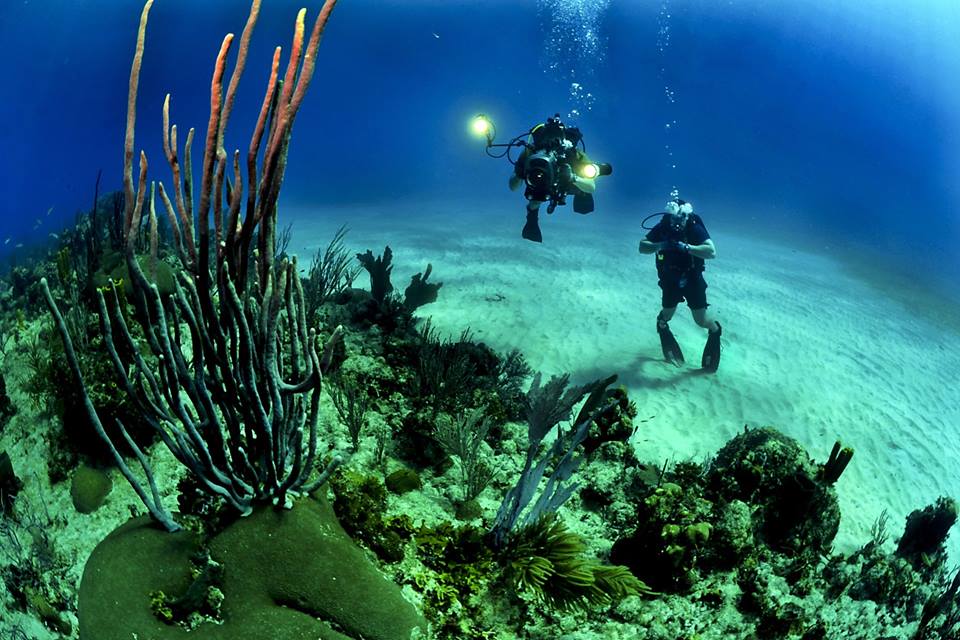Visualise masses of coral in striking shades of fluorescent blue, neon pink and radiant emerald stretching out as far as the eye can see. Now visualise these corals turning white, then brown; slowly becoming lifeless and covered in algae. Sadly, this isn’t footage from an upcoming Ridley Scott film. This is real life.
Chasing Coral is a film directed by Jeff Orlowski – director of the acclaimed 2012 documentary Chasing Ice – and produced by Larissa Rhodes. The film uses time-lapse photography to illustrate the disappearance of coral. It was filmed over three years with 500+ hours underwater and footage from over 30 countries.
Richard Vevers drove the project. After 10 years in advertising, heated discussions about 4ply toilet roll had lost their charm. Vevers became fascinated with the underwater world and spent 10 years photographing it before becoming CEO and founder of The Ocean Agency.
Although Vevers sometimes seems to believe that advertising will solve all the world’s problems, he does make a good point that raising awareness is essential if we are to save corals. Perhaps public indifference really is the true enemy.
The team faced a huge setback when all initial time-lapse footage was out of focus and they were forced to take the time-lapse shots manually. Once filming was successful, watching the coral bleach and then transform into a mass of skeleton and algae was devastating, as is watching the once-thriving ecosystem, teeming with stingrays, turtles, and predators, gradually disappear.
Coral reefs are emitting a protective chemical sunscreen, trying to deflect the heat that is killing them. It is a “beautiful phase of death,” a last resort for the world’s coral reef, which has declined by 50 per cent in the last 30 years.
The feature went into fascinating detail about corals; how they’re made up of colonies of millions of polyps which act as circular mouths, surrounded by tentacles. An exoskeleton is excreted at the base. Inside their tissues are small microalgae which photosynthesise. This is how corals gain most of their energy.
Bright eyed and bushy tailed Zack Rago, a camera technician who happened to be a coral expert, added to the sincerity of the documentary. Manually filming the corals had him visibly disheartened, as he encountered what has essentially become a graveyard.
Finding Nemo flashbacks emerged as he discussed the symbiotic relationship between clownfish and anemones. Many corals are hermatypic, meaning they are responsible for building reefs and 25 per cent of all marine life relies on them
Bleaching – a stress response – is very apparent in the footage. Climate change sceptics are likely to say, “1 or 2 degrees Celsius; does that really matter?”. But if you were to raise the temperature of the human body by that 2.3 degrees it would be life-threatening. Coral turns white by an increase of just 2 degrees.
Biologist Ruth Gates explained how as sea temperatures rise, the plants that live within the coral cannot feed their animal host and so the coral ejects the perceived foreign bodies. The coral exposes its skeleton, starves and dies.
The final shot of the Chasing Coral inspires optimism by showing an extensive list of countries that have committed to power by clean energy. I was left with the poignant message that we have the power to turn things around. It is still possible to save these coral reefs and other ecosystems suffering the effects of climate change. Chasing Coral was produced to both inform and inspire, and it achieves just that.
Image: skeeze via Pixbay

